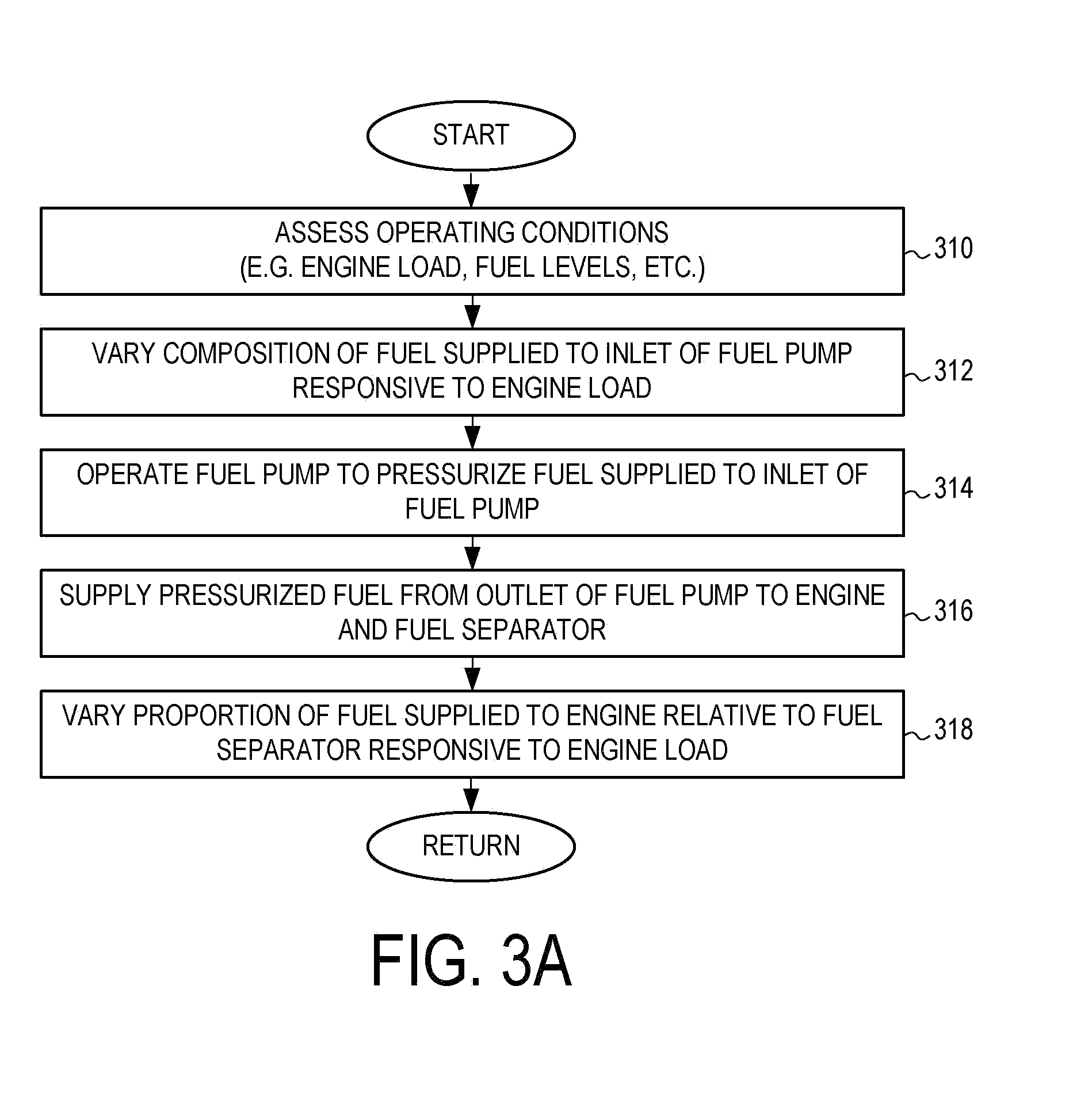Fuel system for multi-fuel engine
a fuel system and engine technology, applied in the direction of electrical control, process and machine control, etc., can solve the problems of increasing the reducing the fuel reducing the efficiency of the engine, so as to facilitate the separation of fuel and reduce the cost and complexity of the fuel system. , the effect of reducing the cost and complexity of the fuel system
- Summary
- Abstract
- Description
- Claims
- Application Information
AI Technical Summary
Benefits of technology
Problems solved by technology
Method used
Image
Examples
Embodiment Construction
[0013]FIG. 1 illustrates an example fuel system 100 for a fuel burning engine 110. As a non-limiting example, fuel burning engine 110 may refer to an internal combustion engine for a vehicle and may include one or more combustion chambers or cylinders. An example cylinder of engine 110 is described in greater detail with reference to FIG. 2.
[0014]As described herein, fuel system 100 may be selectively operated to deliver a first fuel having a higher heat of vaporization (e.g. an alcohol rich fuel) to the engine via one or more direct fuel injectors forming a first injector group and a second fuel having a lower heat of vaporization (e.g. a gasoline rich fuel) may be delivered to the engine via one or more port fuel injectors forming a second injector group. The alcohol rich fuel as described herein refers to a fuel that includes a higher concentration of alcohol than the gasoline rich fuel. Conversely, the gasoline rich fuel as described herein refers to a fuel that includes a highe...
PUM
 Login to View More
Login to View More Abstract
Description
Claims
Application Information
 Login to View More
Login to View More - R&D
- Intellectual Property
- Life Sciences
- Materials
- Tech Scout
- Unparalleled Data Quality
- Higher Quality Content
- 60% Fewer Hallucinations
Browse by: Latest US Patents, China's latest patents, Technical Efficacy Thesaurus, Application Domain, Technology Topic, Popular Technical Reports.
© 2025 PatSnap. All rights reserved.Legal|Privacy policy|Modern Slavery Act Transparency Statement|Sitemap|About US| Contact US: help@patsnap.com



